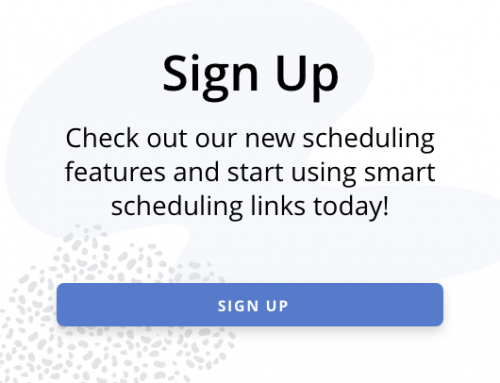

The digital transformation sweeping across the business-to-business (B2B) landscape has made one thing clear: Personalization is no longer a luxury. In today’s information-saturated environment, buyers are constantly bombarded with content, making personalization a requirement for cutting through the noise and staying competitive. Generic messaging simply doesn’t draw attention from buyers who expect businesses to understand their unique challenges and needs. As customer expectations evolve, B2B brands must shift from broad messaging and static processes to dynamic, AI personalization and AI-powered interactions that respond to each step in the buyer’s journey.
AI offers tools that help B2B organizations like yours meet customer demands and anticipate them. The key is to implement AI personalization strategically. This will lead to an enhanced buyer journey, improved sales efficiency, and increased trust in decision-making.
Tackling data silos and legacy systems with smart AI integration
One of the biggest hurdles to adopting AI in B2B personalization is legacy infrastructure. Fragmented data systems and outdated platforms still hold back many organizations and hinder their ability to implement modern tech.
You may think that the solution is to effectively blow everything up and start fresh, but that’s not the way to go, according to Gavin Finn, CEO of Kaon Interactive. Instead, he encourages B2B businesses to work smarter within the current constraints.
“The key to overcoming data silos and legacy system constraints,” Finn explains, “is to prioritize AI-driven personalization, enhancing the customer’s self-directed journey rather than attempting a full-scale tech stack overhaul upfront.”
This kind of adaptive approach centers on embedding AI into existing digital tools. For example, companies can deploy AI-powered recommendation engines and dynamic content personalization across their websites, virtual product demos, and customer engagement platforms. Prospects, in turn, will be able to explore and engage with tailored content while avoiding the need for major changes to the current system architecture.
Guided solution navigation offers one high-impact starting point; when supported by AI, it allows customers to explore complex offerings in an intuitive, contextual manner. The outcome is immediate value, which can lay the groundwork for further AI adoption and more extensive technological overhauls.
Optimizing engagement and increasing revenue with predictive analytics
Timing is everything, especially in the B2B space, given that it’s known for historically long sales cycles. Identifying the right people to engage with is a great first step. However, you must also provide relevant content at the ideal time in the decision-making process.
When purchase decisions often involve multiple stakeholders, extensive research, and a lengthy evaluation process, the window of opportunity to connect with a buyer is often narrow. Reaching out too early can mean your message gets lost in the initial information gathering. On the other hand, contacting prospects too late may risk losing them to a competitor.
Predictive analytics provides you with the ‘when’ and ‘how’. This can make all the difference between a closed deal and a missed opportunity. AI-powered predictive analytics, in particular, give you an edge by analyzing behavioral data and detecting buying signals. You’ll know when decision-makers are poised to engage with your content. This will allow you to guide them to the next steps in their journey.
Finn highlights the real-world impact of such capabilities, stating, “A customer of ours, a global industrial equipment company, leveraged AI-driven predictive analytics to optimize its customer journey […] This AI-driven approach led to a 2x increase in qualification conversion rates and a 25% lift in overall sales conversions, all while improving customer satisfaction by eliminating unwanted outreach.”
Website Activity and Engagement
Kaon Interactive analyzed interactions across various digital touchpoints, including website activity and engagement, with return on investment (ROI) calculators. The data helped identify when prospects were transitioning from interest to intent.
The client, in turn, triggered hyper-relevant content and engagement strategies at precisely the right moment. And once prospects developed buying intent, sales teams stepped in to provide consultative feedback tailored to the customer’s unique needs and constraints. That not only accelerated the deal cycle but also improved the buyer experience by replacing generic outreach with meaningful dialogue.
For your B2B organization, that kind of intelligence could lead to more efficient resource allocation and higher win rates. You can avoid diverting precious resources to leads who aren’t ready for consultative conversations and instead focus on the most promising prospects.
Why AI must remain human-centric
Despite AI’s growing presence in B2B marketing and sales, many executives remain cautious, especially when it comes to the perceived “black box” nature of some AI systems. Concerns around bias and the difficulty in understanding how AI makes decisions are valid. But trust must be central to AI adoption.
“Rather than relying on black-box models,” Finn says, “business leaders should prioritize AI systems that provide explainable recommendations — leveraging techniques like explainable AI (XAI) and confidence scoring to ensure clarity on why certain insights are surfaced.”
Most importantly, AI-based technologies enhance human expertise rather than replace it. If your teams understand how AI arrives at its conclusions, they will feel empowered to trust and act on AI-generated insights. Conversely, if they are constantly second-guessing the insights from a black box AI, it can lead to a reduced ROI.
Experts recommend implementing strong AI governance strategies to ensure ethical and responsible use of the technology. His recommendations include the following:
- Bias Audits: Regular reviews of AI outputs can identify any unintentional biases.
- Diverse Data Sets: Train AI systems using inclusive data to prevent skewed outcomes.
- Human Validation Checkpoints: Use human oversight to vet and refine AI insights before acting on them.
AI Literacy
Beyond these measures, fostering a culture of AI literacy across your organization offers significant advantages. When employees at all levels have a foundational understanding of how AI works, what it can do, and its limitations, it cultivates a more informed and engaged workforce, helping to demystify AI and reduce resistance to its adoption. Increased understanding amongst your team can also lead to more effective collaboration with AI systems and identify new innovative ways to leverage the technology to benefit the business.
As you begin to plan an AI integration, get your team involved. Highlight its status as a value-additive tool in the sales process, not a replacement for your team members. Open and honest communication can proactively address change resistance, leading to a simpler adoption process and faster time to value.
The future of AI in B2B sales
B2B decision-makers are becoming increasingly self-sufficient. As such, your organization must work to deliver timely, personalized, and relevant content to differentiate itself. AI-based personalization makes that possible by turning digital touchpoints into smart systems that guide and support the buyer journey.
The successful integration of AI in B2B sales hinges on an approach that is both strategic and human-centric. This may involve starting with focused applications to drive tangible results, gradually scaling initiatives, and empowering human expertise rather than seeking to replace it. By fostering AI literacy, organizations can build a culture of trust and collaboration, unlocking the full potential of AI to help create a more effective and engaging buyer experience.
Transformation, however, does not require massive disruption, especially early in your journey. Success comes from a focused implementation. Start by applying specific use cases to quickly improve sales efficiency and customer satisfaction. As you gain momentum, gradually scale up your AI initiatives while always prioritizing transparency, ethical practices, and human oversight.
Featured Image Credit: Photo by LinkedIn Sales Solutions; Unsplash; Thanks!











Deanna Ritchie
Editor-in-Chief at Calendar. Former Editor-in-Chief, ReadWrite, Editor-in-Chief and writer at Startup Grind. Freelance editor at Entrepreneur.com. Deanna loves to help build startups, and guide them to discover the business value of their online content and social media marketing.